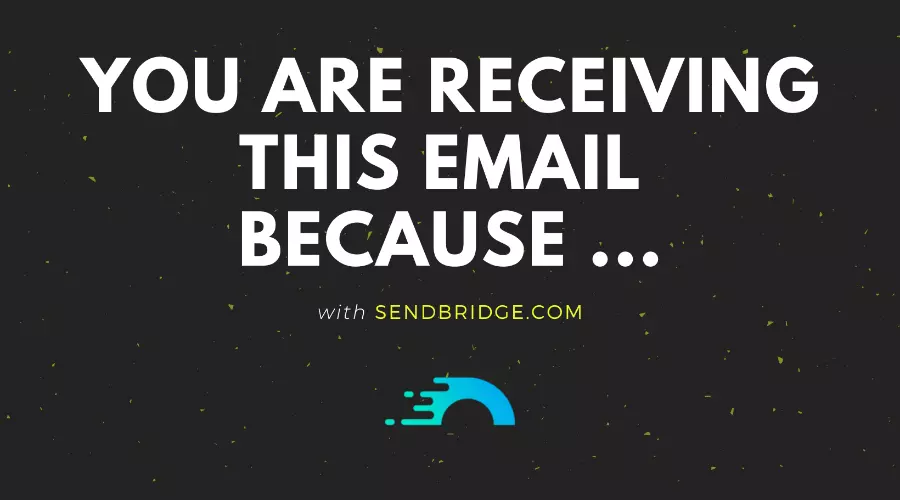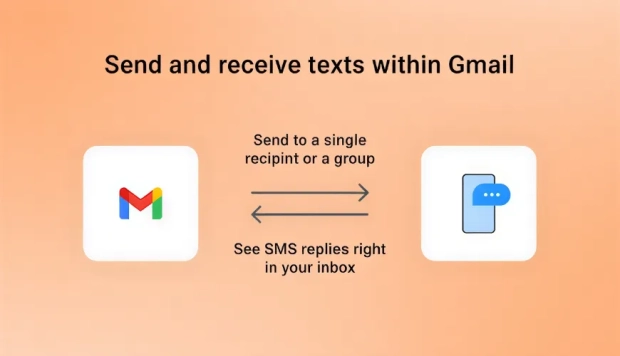The Importance of Meaningful Permission Reminders in Email Marketing

The Power of "You Are Receiving This Email Because"
In the ever-evolving landscape of digital marketing, email remains a powerhouse for engaging customers and driving conversions. However, with the increasing focus on privacy and data protection, it's crucial for marketers to maintain transparency and build trust with their audience. This is where meaningful permission reminders come into play, often starting with the phrase "You are receiving this email because."
Understanding Permission Reminders
Permission reminders are brief statements included in marketing emails that explain why the recipient is receiving the message. These reminders serve multiple purposes:
- They reinforce the legitimacy of your email
- They help recipients recall their relationship with your brand
- They reduce the likelihood of spam complaints
- They comply with various email marketing regulations
The key to effective permission reminders lies in making them meaningful and specific to each recipient's interaction with your brand.
The Importance of "You Are Receiving This Email Because"
The phrase "You are receiving this email because" is a powerful opener for permission reminders. It immediately grabs the recipient's attention and sets the stage for explaining the context of your email. This transparency can significantly improve your email deliverability and engagement rates.
10 Examples of Effective Permission Reminders
Let's explore ten examples of how you can use "You are receiving this email because" in various scenarios:
-
New Subscriber Welcome "You are receiving this email because you recently signed up for our newsletter on our website. Welcome to the [Brand Name] family!"
-
Purchase Follow-up "You are receiving this email because you recently made a purchase from our online store. We hope you're enjoying your new [Product Name]!"
-
Event Registration "You are receiving this email because you registered for our upcoming webinar on [Topic]. We're excited to have you join us!"
-
Free Trial Sign-up "You are receiving this email because you started a free trial of [Product/Service Name]. We hope you're finding it useful!"
-
Membership Renewal "You are receiving this email because your [Brand Name] membership is due for renewal in the next 30 days."
-
Abandoned Cart "You are receiving this email because you left some items in your shopping cart on our website. Did you want to complete your purchase?"
-
Product Update "You are receiving this email because you're a valued user of [Product Name], and we have some exciting updates to share with you!"
-
Survey Participation "You are receiving this email because you recently participated in our customer satisfaction survey. Thank you for your feedback!"
-
Loyalty Program "You are receiving this email because you're a member of our VIP loyalty program. Here are your exclusive offers for this month!"
-
Re-engagement Campaign "You are receiving this email because it's been a while since we've heard from you. We miss you and want to reconnect!"
Best Practices for Crafting Meaningful Permission Reminders
To ensure your permission reminders are effective, consider the following best practices:
-
Be Specific: Avoid vague statements like "You are receiving this email because you're on our mailing list." Instead, remind the recipient of the specific action they took to join your list.
-
Keep it Concise: While it's important to be clear, don't let your permission reminder overshadow your main message. Aim for a single sentence or a short paragraph.
-
Use Friendly Language: Your reminder should feel like a helpful note, not a legal disclaimer. Keep the tone warm and approachable.
-
Include an Unsubscribe Option: Always provide a clear and easy way for recipients to opt-out if they no longer wish to receive your emails.
-
Personalize When Possible: If you have the data, personalize the reminder with the recipient's name or other relevant details.
-
Place it Strategically: The top or bottom of your email are common places for permission reminders. Choose a location that doesn't disrupt your main content but is still easily noticeable.
-
Update Regularly: If you have different email campaigns or list segments, ensure your permission reminders are tailored and up-to-date for each.
The Legal Side of Permission Reminders
While permission reminders are a best practice, they're also often a legal requirement. Regulations like the CAN-SPAM Act in the United States, CASL in Canada, and GDPR in the European Union all have specific requirements for email marketing. Including a clear permission reminder can help you comply with these regulations. For legal documentation or secure archiving of such compliant emails, an EML to PDF converter can be invaluable for preserving their original format.
The Impact on Email Performance
Implementing meaningful permission reminders can have a significant positive impact on your email marketing performance:
-
Reduced Spam Complaints: When recipients understand why they're receiving your email, they're less likely to mark it as spam.
-
Improved Open Rates: A reminder of the relationship can encourage recipients to open and engage with your emails.
-
Enhanced Trust: Transparency builds trust, which can lead to better long-term relationships with your subscribers.
-
Better Deliverability: Fewer spam complaints and higher engagement can improve your sender reputation, leading to better inbox placement.
In the world of email marketing, the phrase "You are receiving this email because" is more than just a formality-it's a powerful tool for building trust, maintaining compliance, and improving the performance of your campaigns. By crafting meaningful permission reminders, you demonstrate respect for your subscribers' inboxes and reinforce the value of your relationship with them.
Remember, the goal is to make your subscribers feel informed and in control of their email experience. When done right, permission reminders can transform from a legal necessity into a valuable part of your email marketing strategy, fostering stronger connections with your audience and driving better results for your business.




